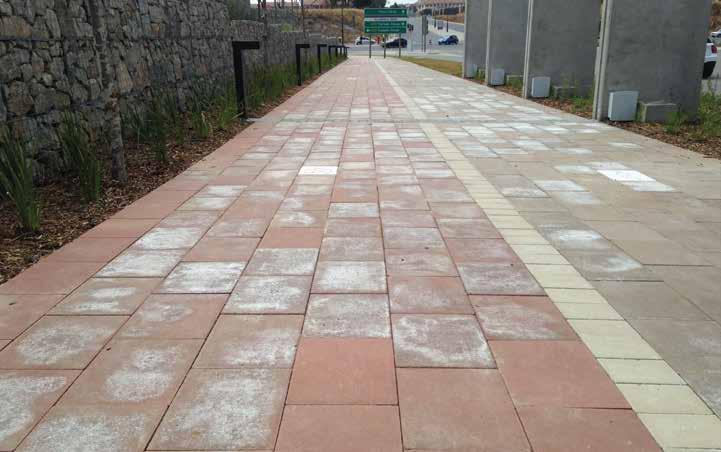
4 minute read
Vertical fixed connection (VFC) wall block
Bosun VFC Retaining Wall System
A retaining wall block awarded with three patents.
Advertisement
The VFC (Vertical Fixed Connection) retaining wall system is designed to construct 90° concrete block retaining walls. In addition, the VFC system meets SANRAL’s requirements for vertical retaining walls outlined in South Africa COTO specification for roads 2019.
The system uses a positive mechanical interlock connection between the geogrid and the block through an oval shaped interlocking pin. In addition to the fixed connection, the VFC uses a double nib system, resulting in increased shear resistance than what a single nib system can offer.
The innovativeness of this system is evident in the fact that the company holds two direct patents and one indirect patent on various aspects of its design.
A positive mechanical connector and double nib system:
• The VFC block features a specially shaped channel that enables the connection of geogrid to a custom-designed concrete pin (locking mechanism). • The system mechanically secures geogrid to the block, enabling the building of vertical, 90 degree retaining walls. Patent: ZA 2018/04934 • Vertical walls are required on various infrastructure projects with space constraints. The VFC creates more usable ground space. • The VFC further boasts a double nib system, resulting in increased shear resistance than what a single nib system could offer. • The VFC block is compliant with SANS8006-1 and tests have been conducted in accordance with ASTM D6638 and ASTM D6916 to verify the local facing stability. • The VFC block has been designed for use with a variety of both imported and locally manufactured geotextiles available in South Africa.

Easy to use and install:
As with the patented Bosun Castle Bottom kerbs (Patent ZA: 2012\09544), the VFC Base Block has cavities on its bottom surface. These cavities make the base block much quicker and easier to install. Where an imperfect bedding layer forced installers to uplift, fill up and re-lay conventional blocks it is easier to manoeuvre the Castellated block into place, with the bedding layer/levelling pad material being displaced into the cavities in the base block.
• The castellated base block simplifies bedding and sets the levels for all succeeding layers. • The base block comes with a simple jig which enables the placement of a spirit level across both axes. This, in turn, facilitates accuracy and ease of setting out. • The base block can be inverted and used as capping on the top of the wall. • The locking of the geogrid into the VFC block is quick and simple. • The weight of the standard VFC block is approximately 24kg, making it light enough for one man to handle, in turn promoting hand labour. • The VFC block complies with SANS 508 and block heights in particular, are guaranteed to be consistent.
VFC block
Dimensions 300mm x 300mm Height 140mm Mass per Block ±26kg
VFC base block
Dimensions 300mm x 250mm Height 80mm Mass per Block 13kg



Locking mechanism

Design concept
Design concept:

Interchangeable face:
The VFC features an interchangeable face. This means that it can be used to construct linear, concave and convex wall geometries with a 2m radius. No concrete infill or cutting of blocks is required when constructing curves.
The larger block face is used by default, while concave curves can be achieved by simply flipping the VFC block over from front to back (Patent: ZA 2017/08449).
Convex curves can be achieved by shifting the rear parts of the blocks towards each other. This will result in less cutting on site.


Practical advantages:
Roads built on the VFC system are better equipped to handle potential impacts on barriers. Conventional retaining wall systems using friction principles may fail as opposed to the fixed connection system used with the VFC.
VFC System Conventional System


Due to the fixed connection and strong nibs, zero relative displacement occurs between blocks experiencing building surcharge.
VFC System Conventional System












